|
Written by Anne Zinn
Cashmere fiber is a main product of cashmere goats that is produced by secondary hair follicles, and, like wool, the cashmere fiber is composed of hair-keratins and keratin-associated proteins. These keratin-associated proteins serve as a matrix that cross-links hair-keratins and are therefore believed to play an important role in defining the physical and mechanical properties of the fiber. Five keratin-associated protein 6 genes (KRTAP6-5) have been identified in sheep and some variations have been associated with wool fiber diameter-related traits, but none of these homologues have been identified in goats. Given the potential effect of KRTAP6 on wool traits, investigation is needed to identify KRTAP6-n in goats and to determine whether variation in KRTAP6s affects cashmere traits. Therefore, a paper recently published in the Journal of Animal Science attempted to identify the caprine KRTAP6-5 to search for potential variation in the gene and to investigate its effect on cashmere fleece traits. Efforts of this research reported the identification of the sheep KRTAP6-5 homologue on goat chromosome 1 and PCR-single strand conformation polymorphism analysis in 300 Longdong cashmere goats revealed the existence of 12 variant sequences. Variation in goat KRTAP6-5 was found to be associated with variation in mean-fiber diameter, suggesting that KRTAP6-5 is worthy of further study in the context of variation in cashmere traits. The full paper can be found on the Journal of Animal Science webpage.
0 Comments
Submission Deadline: 31 January 2022
About this Research Topic The significance and importance of small ruminants and their breeding for humankind are diverse and cannot be overestimated. Since domestication, sheep and goats have been a source of valuable food products (milk, meat) and warm wool/leather clothes and shoes that protect from cold weather. They also served as sacred animals in early religious rituals and celebrations and accompanied nomads and traders in their long migrations and travels. Sheep wool contributed to building empires and advancing industrial revolutions. In the past and at present, small ruminant products provide many people living in extreme poverty with essential nutrients, supplying them with everyday necessities and ensuring a traditional lifestyle (e.g., pastoralism) for many ethnic groups. Implementation of high-throughput arrays and next generation sequencing approaches has unlocked an era of genomic investigation in small ruminants, addressing various research aims, from deepening knowledge on the origin and genetic connections of worldwide sheep and goat breeds to understanding the mechanisms underlying the formation of economically important traits and tremendous natural resilience of small ruminants. Lenin Aguirre-Riofrio, Teddy Maza-Tandazo, Manuel Quezada-Padilla, Oscar Albito-Balcazar, Alex Flores-Gonzalez, Osvaldo Camacho-Enriquez, Amparo Martinez-Martinez, BioGoat Consortium, and Juan Vicente Delgado-Bermejo
Simple Summary An individual from a population presents a series of characteristics that differ from the rest and that increase as the kinship relationships are lower; this leads to the fact that two populations that stop exchanging genetic material through mating eventually come to present characters common to all members of each, but different between the two. This was what happened with the animal populations brought to America more than 500 years ago from the Iberian Peninsula in the colonization period, resulting in Creole populations that inhabit the harshest environments of our immense geography. The Creole goat “Chusca Lojana” has adapted to live in the dry forest region of Southern Ecuador, where environmental conditions are warm-dry, with sparse vegetation and a rather irregular topography. In the present study, the intra-breed genetic diversity of this goat is analyzed as well as its genetic relationships with other breeds. Significant FIS and intra-breed structure show that there is some heterogeneity and structure within the breed. However, inter-breed structure results underline that this breed is differentiated from other Creole breeds, because crossbreeding with other breeds was not detected; therefore, we must take advantage of this valuable genetic resource, and ensure its conservation and selection. Abstract The largest population of goats (62%) in Ecuador is in the dry forest region in the south of the country. A Creole goat, named “Chusca Lojana”, has adapted to the dry forest region where environmental conditions are warm-dry, with sparse vegetation. Knowledge of the genetic information of the Creole goat is important to determine intra-racial diversity, the degree of genetic distance among other breeds of goats, and the possible substructure of the population, which is valuable for the conservation of such a species’ genetic resources. A total of 145 samples of the Creole goat was taken from the four biotypes previously identified. Genetic analyses were performed using 38 microsatellites recommended for studies of goat genetic diversity (FAO-ISAG). The results of within-breed genetic diversity showed a mean number of alleles per locus (MNA) of 8, an effective number of alleles (Ae) of 4.3, an expected heterozygosity (He) of 0.71, an observed heterozygosity (Ho) of 0.63, polymorphic information content (PIC) of 0.67, and an FIS value of 0.11. Between-breed genetic diversity among 43 goat populations (native of Spain, American Creole, Europeans, and Africans) showed the following values: FIS = 0.087, FIT = 0.176, and FST = 0.098. Regarding the analysis of the population structure, the results showed that the Creole Chusca Lojana goat population is homogeneous and no genetic separation was observed between the different biotypes (FST = 0.0073). In conclusion, the Chusca Lojana goat has a high genetic diversity, without exhibiting a genetic substructure. Therefore, it should be considered as a distinct population because crossbreeding with other breeds was not detected. Keywords: Capra hircus, biodiversity, genetic resources, conservation, microsatellites markers Rahman Rostamkhani (1), Seyyed Saeid Mousavi (2), Hossein Ghorbani (1), Seyyed Vahid Mortazavi (1), Mohammad Taghi Moslemioun (2), Mohammad Hossein Nemati (2), Hassan Mohammadi Nedjad (2), Nader Papi (3) and Farhad Mirzaei (3) (1) Animal Production Improvement Administration of Zanjan province. Agricultural Jihad Organization. Zanjan, Iran. (2) Animal Science Research Department. Zanjan Agricultural and Natural Recourses Research and Education Center. AREEO. Zanjan, Iran. (3) Agricultural Research Education and Extension Organization (AREEO), Animal Science Institute of Iran, Karaj. 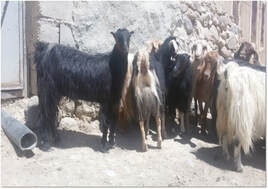 History of goat rearing in Zanjan province Archeological studies show the history of goat domestication dates to 7000 BC. Historical references also refer to Persia (Iran) as the land of origination of goat domestication. Since the earliest times, Iranians have reared goats for meat, milk, fiber, and skin supply. Currently, goat rearing has a notable role in Iranian nomadic and rural household’s life economy. The recent year’s goat keeping importance has been revealed much more because of climate changes, feed source limitation, and lack of relative advantage of pure breed farm animal production in Iran. Goat keeping has an essential role in meat and milk production in Zanjan province. Historically Name of Afshari goat is originated from the Afshar tribes who first reared this ecotype of goat in the region. Geographic distribution area Afshari goat population has been distributed in the different parts of the Zanjan province in about 20000 Km2.surface area, including highland altitudes and plains areas with other climatic conditions. Population Based on the current official data, the Afshari goat population is estimated at about 130,000 heads in the province. Rearing systems Goat keeping procedures are generally rural or semi-nomadic system. Goats are often reared together with sheep and in the grazing livestock act as a frontier animal or leadership of the flocks. Pure herds of goats are not usually seen among the local livestock. Job creation Among the farm animal rearing, goat keeping is a part of daily life of the rural and tribes because of their great interest in this occupation. They usually keep goats not only to improve their incomes but also for the natural compatibility and attractive appearance of their herds. The cultural, social, and economic relationship among nomadic and rural communities Afshari goats with 130,000 heads produce some 550 tons of meat and 2,000 tons of milk in the province annually. Milk, fiber, and meat of Afshari goat are used by the nomadic and rural, and also urban people. Goat keeping has an important role in rural and nomadic life economy because of the food source supply and earning incomes. Hence, Afshari goats have great economic importance for rural or nomadic households. Appearance features Few references indicate the phenotypic characteristics of Afshari goat among the goat sciences literature. In general, the dominant color of the coating fiber is pure black, but other colors are seen in the flocks. Both male and female goats are hornless. Bucks have a strong and muscular body, and because of the good capability of grazing in poor pastures or feeding low-quality forages and they can return good income for their owners. Does have good performance of milk production, daily milk yield ranges from 1.5-2.3 Kgs. Mature bucks weigh more than 60 kgs., which is a good potential for meat production. Export
Goat yields are generally consumed inside the province, and the exportation of the products is not performed. Items used for products Of the Afshari goat products, hair products can be mentioned. Hair fiber growth is about 25 cm/year, and each goat can produce some 400 grams of hair per year, which is used for preparing of handicrafts and traditional clothes in most villages. The skin is used in the leather industry. Milk is used for feeding kids, and the rest of it is used to prepare cheese, yogurt, whey, and some other local milk derivatives. Mature bucks weigh more than 60 kgs., which supply the local and urban residents’ meat needs. Measures for identifying and genetic improvement There is a decent rate of multiparity in Afshari goats, which can result in high performance and more economic animals, by performing of interbreeding selections or other livestock improvement programs. In 2007, an on-farm project plan entitled “An investigation on crossbreeding of the Sannen bucks with native black goat (Afshari does)” was carried by the Research Center for Agriculture and Natural Resources of Zanjan province. In these projects, the performance of first and second generation of crossbreds (F1 and F2) had a relatively good result, but in most cases, their adaptability was weak in the rural rearing condition. Suggestions for performance improvement As a national genetic resource, Afshari goats have valuable production performance and traits which has not been studied scientifically. For identification of the production performance of this ecotype, it is necessary to do comprehensive researches and studies. Associate Editor for Genetics  Dr. J.N.B. Shrestha retired as Research Scientist in the Dairy and Swine Research and Development Centre, Agriculture and Agri-Food Canada, Quebec, Canada, and Adjunct Professor in the Department of Animal Science, University of Manitoba, Winnipeg, Manitoba, Canada. He obtained professional degrees from U.P. Agricultural University, India (BVSc & AH; 1966), and from University of Minnesota, USA (MS and Ph.D.; 1970 and 1973), followed by Postdoctoral research (1973-75) at the University of Minnesota and National Research Council of Canada. His area of specialization has been in Animal Breeding and Genetics, Reproduction, Production and Conservation of Domestic animal diversity. He has supervised numerous MS and Ph.D. students, as well as authored and co-authored more than 200 scientific, technical and popular papers on long-term sheep, swine and poultry breeding, development of reproduction and molecular technologies to enhance productivity, and the preservation of domestic animals. Dr. Shrestha also participated in International Conferences held in various countries as keynote speaker, chaired sessions and presented scientific papers. EFSA Panel on Biological Hazards (BIOHAZ) Antonia Ricci, Ana Allende, Declan Bolton, Marianne Chemaly, Robert Davies, Pablo Salvador Fernandez Escamez, Rosina Girones, Lieve Herman, Kostas Koutsoumanis, Roland Lindqvist, Birgit Nørrung, Lucy Robertson, Giuseppe Ru, Moez Sanaa, Panagiotis Skandamis, Niko Speybroeck, Marion Simmons, Benno Ter Kuile, John Threlfall, Helene Wahlstrom, Pier-Luigi Acutis, Olivier Andreoletti, Wilfred Goldmann, Jan Langeveld, Jack J Windig, Angel Ortiz Pelaez and Emma Snary Abstract
Breeding programmes to promote resistance to classical scrapie, similar to those for sheep in existing transmissible spongiform encephalopathies (TSE) regulations, have not been established in goats. The European Commission requested a scientific opinion from EFSA on the current knowledge of genetic resistance to TSE in goats. An evaluation tool, which considers both the weight of evidence and strength of resistance to classical scrapie of alleles in the goat PRNP gene, was developed and applied to nine selected alleles of interest. Using the tool, the quality and certainty of the field and experimental data are considered robust enough to conclude that the K222, D146 and S146 alleles both confer genetic resistance against classical scrapie strains known to occur naturally in the EU goat population, with which they have been challenged both experimentally and under field conditions. The weight of evidence for K222 is greater than that currently available for the D146 and S146 alleles and for the ARR allele in sheep in 2001. Breeding for resistance can be an effective tool for controlling classical scrapie in goats and it could be an option available to member states, both at herd and population levels. There is insufficient evidence to assess the impact of K222, D146 and S146 alleles on susceptibility to atypical scrapie and bovine spongiform encephalopathy (BSE), or on health and production traits. These alleles are heterogeneously distributed across the EU Member States and goat breeds, but often at low frequencies (< 10%). Given these low frequencies, high selection pressure may have an adverse effect on genetic diversity so any breeding for resistance programmes should be developed at Member States, rather than EU level and their impact monitored, with particular attention to the potential for any negative impact in rare or small population breeds. Download your copy here: http://onlinelibrary.wiley.com/doi/10.2903/j.efsa.2017.4962/epdf Visit the EFSA Journal at: http://www.efsa.europa.eu/en/publications © 2017 European Food Safety Authority. EFSA Journal published by John Wiley and Sons Ltd on behalf of European Food Safety Authority. Production Systems and Sustainability
Reduced survival of lambs from maiden ewes exposed to mature ewes pre-lambing S.M. Robertson, M.B. Allworth, M.A. Friend Vol. 151, p11–15 The suboptimal survival of new-born lambs is a major source of reproductive inefficiency, is often lower in maiden (first-lambing) compared with multiparous ewes, and this may be associated with poor maternal behaviour due to inexperience. This study examined whether the survival of lambs from maiden ewes could be increased by exposing maiden ewes to multiparous lambing ewes in the month before lambing. Pregnant maiden Merino ewes (n = 446) which had been mated at 18 months of age were allocated to three replicates of two treatments. Marcel Amills, Center for Research in Agricultural Genomics (CSIC-IRTA-UAB-UB)
One of the most significant advances in the field of caprine genomics was the genome sequencing of a 3-year-old female Yunnan black goat in 2013 by a Chinese team led by Dr. Wen Wang. The aim was achieved by smartly combining conventional next generation short-read sequencing with an optical mapping technology that facilitated the laborious process of genome assembly. Book Announcement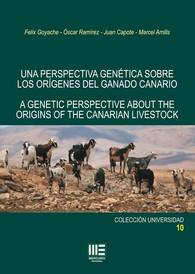 The food animals with the largest distribution on Earth are goats, with more than one billion heads. Sixty-one percent of these are distributed in twenty-seven percent of the poorest countries. Goats can be found in the Polar Circle or in the tropical rain forests, in the steepest mountains or in desert regions, on high-tech farms or in refugee camps. Nonetheless, most of them survive in pockets of poverty, among the most outcast pariahs, where their very existence can separate life from death in humans. This study focusing on the genetic perspective of the origins of goats from the Canary Islands contributes to the universality of that specie. In addition, the book includes research that demonstrates the influence of goats from the Canary Islands on American ‘creole’ genotypes. Finally, the book also discusses the origins of sheep and swine from the Canary Islands. |
IGA Blog
The International Goat Association promotes goat research and development for the benefit of humankind, to alleviate poverty, to promote prosperity and to improve the quality of life. Archives
May 2024
Categories
All
|
|
International Goat Association
2516 Millbrook Rd., Little Rock, AR72227 USA email: [email protected] -454-1641 |
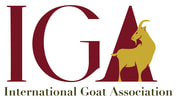

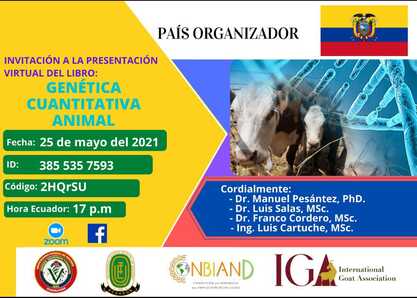
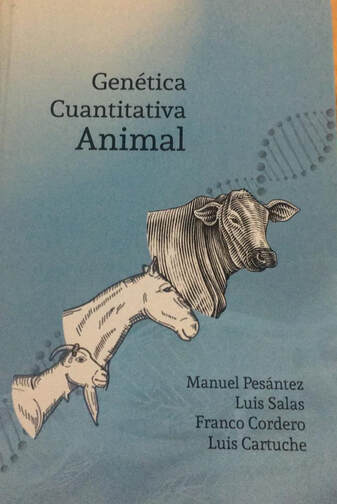
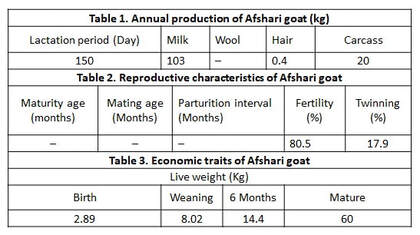
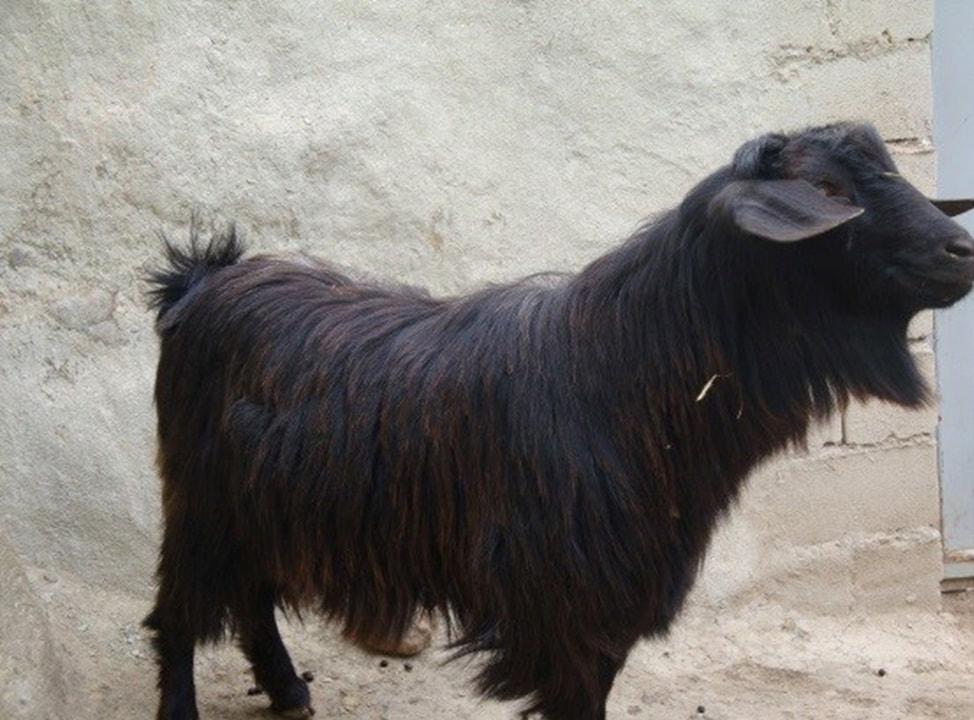
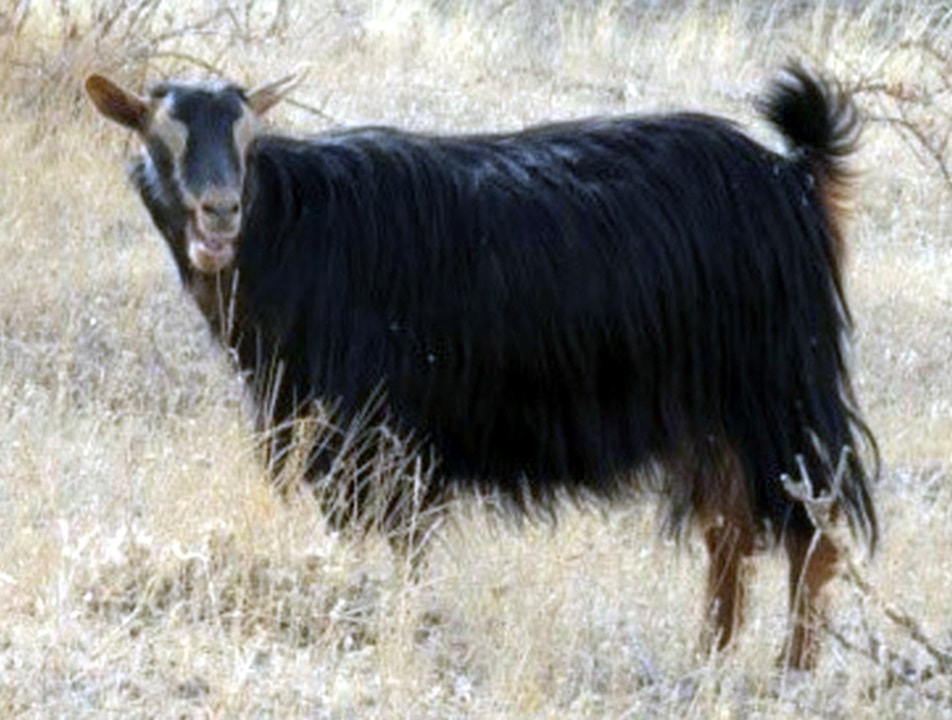
 RSS Feed
RSS Feed